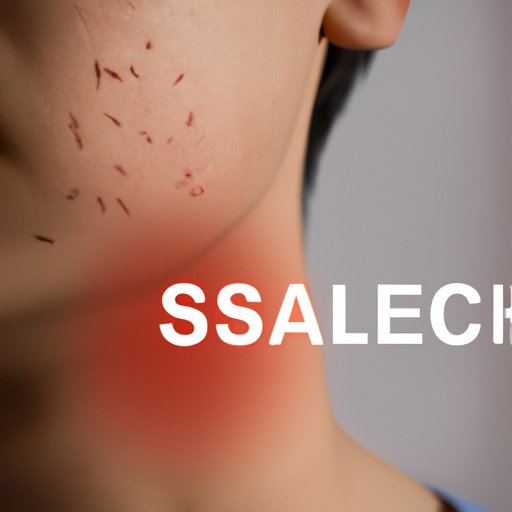
I. Introduction
If you have ever experienced the pain and discomfort of shingles, you might wonder if it could happen on your face. Yes, you can get shingles on your face, and it can be even more complicated than having shingles on other parts of your body. Understanding the causes, symptoms, and treatments for shingles on the face is crucial to managing this viral infection effectively.
II. Exploring the Phenomenon of Shingles on the Face: Causes, Symptoms, and Treatments
Shingles is a viral infection caused by the varicella-zoster virus, which is the same virus that causes chickenpox. After a person has chickenpox, the virus can remain dormant in their nervous system for years until it becomes active again. This reactivation of the virus causes shingles.
Shingles on the face or herpes zoster ophthalmicus occurs when the virus affects the nerves that supply the eye and the skin of the forehead, nose, and eyelids. As many as 20% of shingles cases can affect the face, and it can cause severe pain, vision problems, and even blindness.
The symptoms of shingles on the face are similar to those of shingles on other parts of the body, but because it affects the facial nerves, it can be more severe. The initial symptoms of shingles on the face include:
- Pain and burning sensation
- Numbness or tingling
- Rashes and blisters on the forehead, nose, and eyelids
- Headache and fever
If a person experiences these symptoms, they should seek medical attention promptly. Treatment can include antiviral medication, pain relief medication, and topical creams and ointments.
III. Here’s What You Need to Know about Getting Shingles on Your Face
Several risk factors may increase a person’s likelihood of developing shingles on their face, including:
- Being older than 50
- Having a weakened immune system
- Having had chickenpox
- Experiencing a high level of stress
- Suffering an injury to the face
Older people with weaker immune systems are more susceptible to shingles in general, but when shingles affect the face, it can be more severe and have a higher risk of complications.
Recognizing shingles on the face is essential for prompt treatment and preventing complications. A person should seek medical attention if they experience the initial symptoms and if they notice:
- Swelling around the eye or eye redness
- Dull eye pain, which may indicate an inflammation of the cornea, the clear dome over the colored part of the eye
- Cloudy or blurred vision
IV. The Unique Challenges of Managing Shingles on Facial Skin
Shingles on facial skin can present difficulties that are not typically experienced in other areas of the body. Facial skin is more delicate and sensitive, and shingles on the face can have a higher risk of complications, such as vision problems and scarring.
Because shingles on the face can cause a burning sensation and painful rashes, a person may be inclined to scratch or rub their face, which should be avoided to prevent scarring and further infection. Medical treatment for shingles on the face may involve antiviral medication, pain relief medication, and ointments or creams to prevent scarring and soothe the skin.
V. Faces of Shingles: Personal Stories and Medical Advice
Personal stories from those who have experienced shingles on their face can provide insights into the unique challenges of having this condition. Some common problems that people face include difficulty carrying out daily tasks and difficulties with communication. Support from loved ones and specialized care from medical professionals can make a significant difference in managing shingles on facial skin.
Medical professionals familiar with shingles on the face discuss that treating shingles on facial skin involves various treatments. The top goal, after treating the infection, is to avoid scarring and prevent long-term complications, such as decreased vision.
VI. Preventing Shingles on the Face: What You Can Do to Reduce Your Risk
Several strategies can help individuals reduce the risk for shingles on their face. The most effective prevention is through receiving the shingles vaccine.
Other tips include maintaining a healthy immune system, reducing stress levels, and maintaining general skin health. Taking care of one’s health can help increase the body’s ability to fight viral infections like shingles.
VII. Conclusion
Shingles on the face can be a painful and concerning condition that requires prompt treatment and specialized care. Understanding the causes, symptoms, and treatment of shingles on the face is crucial for managing this viral infection effectively. Taking care of one’s health and taking steps to reduce the risk of shingles can help prevent the occurrence of shingles on the face, making speaking to a medical professional an essential first step when you notice any symptoms.





